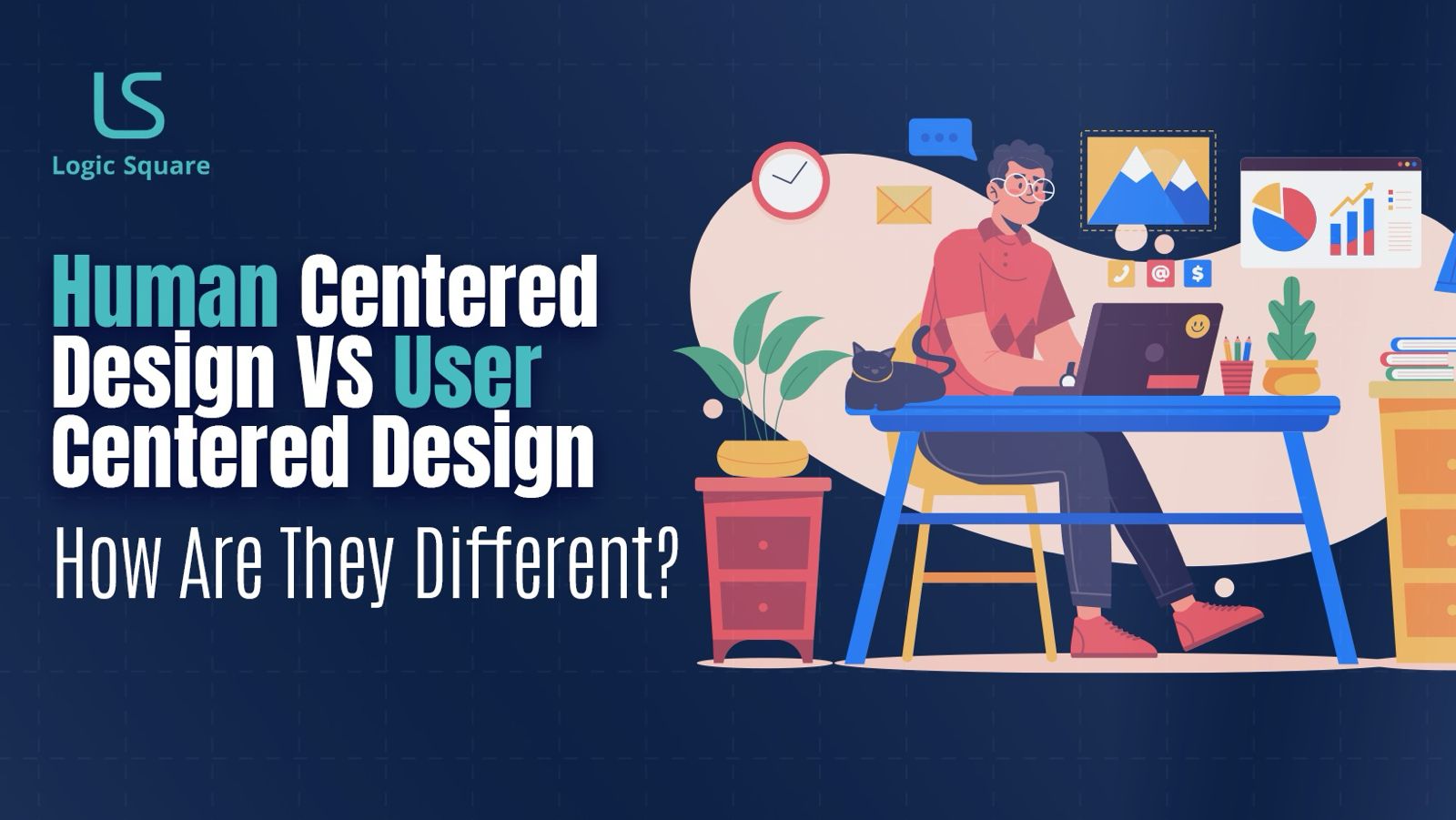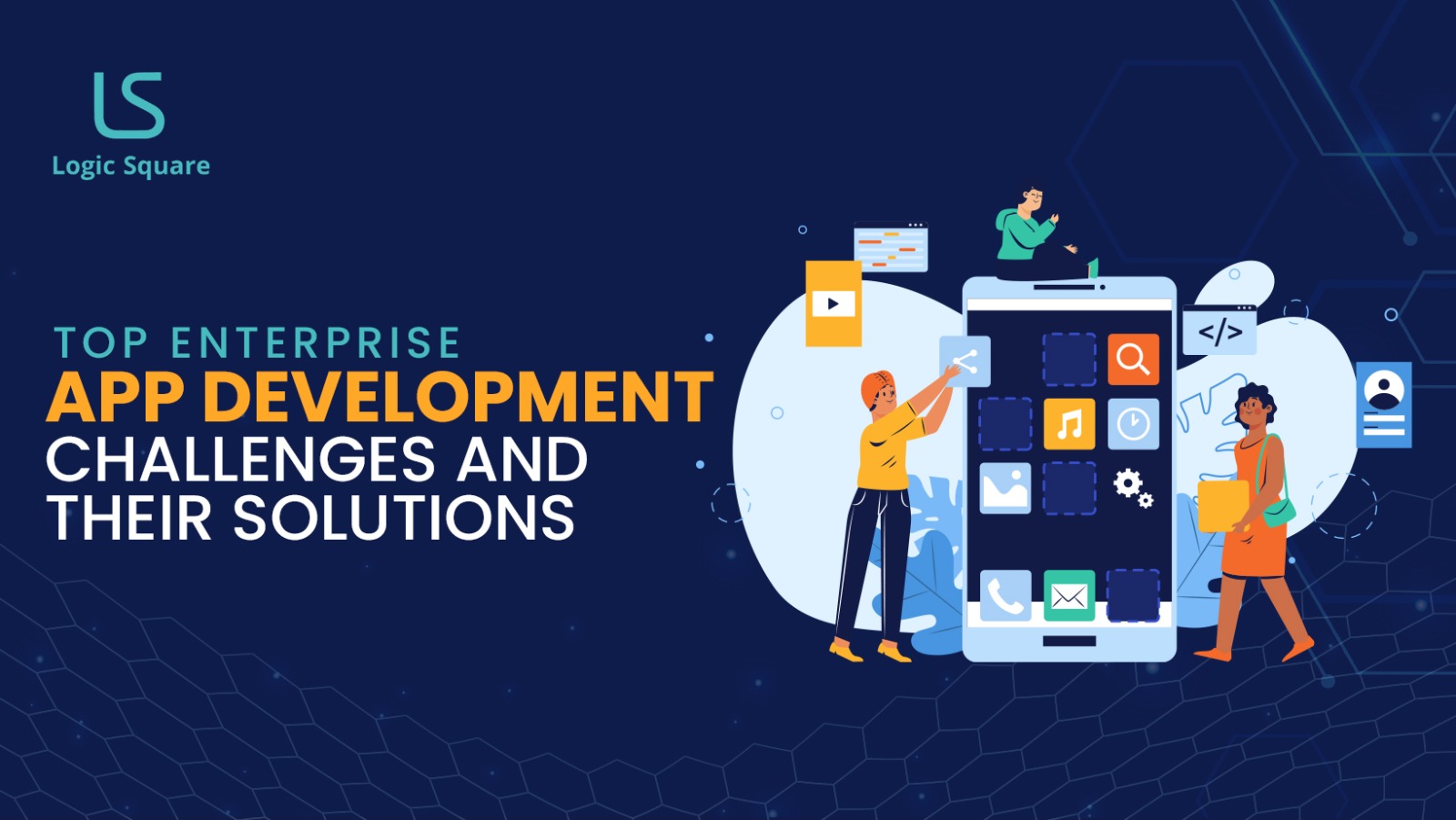In today’s digital-first world, exceptional design isn’t just a bonus; it’s a necessity. Whether you’re building a mobile app, a SaaS platform, or a large-scale enterprise solution, how you approach design will determine how users engage with your product and whether they stick around.
Two of the most widely used design philosophies are Human-Centered Design (HCD) and User-Centered Design (UCD). Though they may seem similar, they’re rooted in different perspectives and lead to different outcomes. At LogicSquare Technologies, we specialize in blending these approaches to create intuitive, scalable, and emotionally intelligent software solutions that resonate with real people. Building great software isn’t just about tech; it’s about trust, empathy, and experience.
Table of Contents
ToggleLet’s dive into the nuances between Human-Centered Design and User-Centered Design, and explore how LogicSquare brings the best of both worlds to every project.
What Is Human-Centered Design?
Human-Centered Design is a broad, empathy-driven approach that goes beyond the immediate user interaction to consider the wider human experience. This methodology examines the emotional, cultural, psychological, and even ethical factors affecting how people interact with technology.
Rather than focusing solely on how a product is used, Human-Centered Design examines why people behave the way they do. It considers multiple stakeholders, including users, support staff, managers, and even the surrounding environment, to create solutions that are not just functional but truly human.
The process typically starts with a deep discovery phase. Designers and researchers conduct interviews, observations, and empathy exercises to understand human motivations, frustrations, and needs. From there, ideas are generated collaboratively, prototypes are built and tested, and iterations continue based on ongoing feedback.
The ultimate goal of Human-Centered Design is to create systems that are inclusive, thoughtful, and capable of solving real human problems in complex, often messy environments.
What Is User-Centered Design?
User-Centered Design, on the other hand, zooms in more narrowly on the end user—the person who will directly interact with the product or interface. This approach is about making digital products easy to use, intuitive, and task-oriented. It prioritizes efficiency, clarity, and responsiveness to user needs.
User-Centered Design begins by identifying who the target users are. Through research techniques like usability testing, persona development, and journey mapping, the design team clearly understands what users want to achieve, what challenges they face, and how they prefer to engage with the product.
From there, the product is designed with those specific users in mind. Prototypes are tested and refined based on usability feedback, and the design is continuously improved to enhance performance and user satisfaction.
Where Human-Centered Design seeks to understand the human experience, User-Centered Design is laser-focused on optimizing the interaction between a user and a product. It’s often used for apps, dashboards, websites, and software platforms where usability and functionality are paramount.
The Core Differences
While Human-Centered Design and User-Centered Design share some foundational principles such as empathy, iteration, and feedback loops, they differ in focus, scope, and intent.
The focus of Human-Centered Design is on people as complex human beings, considering their emotions, cultural background, and societal context. It’s not limited to the end user. Still, it includes all stakeholders who might be impacted by the design, including those who don’t directly interact with the system but are affected by it. For example, when designing a healthcare app, HCD would consider patients, caregivers, doctors, and administrators.
In contrast, User-Centered Design hones in on specific users with clearly defined goals. It prioritizes usability, accessibility, and efficiency. The end product must help users complete tasks with minimal effort and maximum satisfaction.
Another key difference is the design context. Human-Centered Design is ideal for solving complex, ambiguous problems where the solution is not immediately clear—such as designing community platforms, public services, or socially impactful applications. User-Centered Design, meanwhile, shines when designing interfaces or workflows where user actions are predictable and goal-oriented.
Another key difference is the design context. Human-Centered Design is ideal for solving complex, ambiguous problems where the solution is not immediately clear—such as designing community platforms, public services, or socially impactful applications. User-Centered Design, meanwhile, shines when designing interfaces or workflows where user actions are predictable and goal-oriented.
Finally, the outcomes also differ. Human-Centered Design often leads to more innovative, emotionally resonant solutions that people feel deeply connected to. User-Centered Design leads to sleek, efficient experiences that users enjoy using day-to-day.
Which Approach Is Right for Your Project?
It depends. Human-Centered Design is the right choice if your project requires addressing broader human concerns such as behavior change, social impact, or emotional engagement. It’s especially effective for early-stage innovation or complex environments with multiple user types.
However, suppose you’re building a product where usability and user satisfaction are the key drivers, such as a mobile app, enterprise dashboard, or e-commerce site. In that case, User-Centered Design is likely the better fit.
In reality, most successful products benefit from a blend of both.
That’s exactly what we offer at LogicSquare Technologies.
How LogicSquare Technologies Bridges HCD and UCD
At LogicSquare, we don’t believe in one-size-fits-all solutions. We believe in contextual design thinking, an approach where we merge the best of Human-Centered and User-Centered Design to create products that work well and feel right.
Here’s how we do it:
1. Empathy-Fueled Discovery
We begin every project by going beyond the brief. We uncover insights about the people we’re designing for through deep conversations, field research, and behavioral analysis. This includes both direct users and indirect stakeholders, ensuring no one is left out of the design conversation.
2. Defining the Right Problems
Using the insights gathered, we help clients uncover their users’ true challenges, not just the obvious ones. We focus on what matters to people and businesses, aligning human needs with business goals.
3. Creative, Inclusive Ideation
We bring diverse voices into the brainstorming process. Designers, developers, users, and stakeholders collaborate to ensure that ideas aren’t just technically feasible, emotionally resonant, and culturally appropriate.
4. Prototyping That Speaks to Humans
From low-fidelity wireframes to full-fledged prototypes, we test everything with real users in real-world conditions. We look beyond metrics to observe body language, emotional response, and contextual behavior.
5. Usability Meets Emotion
Our team balances performance with personality. Every button, transition, and interaction is refined to function well and feel effortless and intuitive. That’s the LogicSquare difference: We don’t just design products, we design experiences that connect.
Why Choose LogicSquare for Your Next Product?
When you work with LogicSquare Technologies, you partner with a team that understands the deeper layers of digital design. We don’t just build what’s asked—we uncover what’s needed.
- Deep Research Capabilities: We dig into user behavior, motivations, and cultural context to make decisions.
- Cross-Disciplinary Talent: Our team of designers, developers, researchers, and strategists works in sync to create unified solutions.
- Proven Track Record: From startups to enterprises, we’ve helped clients across healthcare, fintech, education, and more deliver products users love.
- Agile + Empathetic: We move fast, iterate often, and always stay grounded in the human experience.
Whether building something new or refining an existing product, we bring the strategic insight and design maturity you need to deliver meaningful results.
Ready to Build Products People Love?
At LogicSquare Technologies, we combine logic with empathy to create human-first, user-friendly digital experiences.
Suppose you want to develop a mobile app, SaaS platform, enterprise dashboard, or custom software solution. In that case, we’d love to help you bring it to life with the right balance of usability and humanity.
Let’s Talk.
Book a free discovery session with our design experts and see how we can bring your vision to life.
Because great software doesn’t just serve users; it understands them.




